- Home
- Nathaniel Philbrick
Bunker Hill: A City, a Siege, a Revolution Page 4
Bunker Hill: A City, a Siege, a Revolution Read online
Page 4
Over the course of the next few months, Joyce Junior posted more announcements (one of which appeared in the Boston Gazette over John Winthrop Junior’s advertisement for a new shipment of flour) in which Winthrop’s alter ego continued to issue threats against the tea consignees and their associates. One night in April, the painter John Singleton Copley awoke to discover that his house on Beacon Hill (just down the street from the Hancock mansion) was surrounded by a raucous mob that wanted to know if a Mr. Watson from Plymouth was staying with him. At thirty-five, Copley had long since established himself as the foremost painter not only in New England but all America. A largely self-taught genius and purposefully apolitical, Copley had painted the portraits of many loyalists and of many patriots. He had an unmatched ability when it came to creating a sense of his subject’s presence. When you looked at a Copley portrait, you felt as if the subject was there for all time, frozen in an eternal now. If there was anyone of whom all of Boston should have been proud, it was Copley. But as far as the patriots were concerned he could not be trusted since he was married to the daughter of a tea consignee.
George Watson, a merchant from Plymouth, was part of the extended loyalist family into which Copley had married. Copley explained to those gathered outside his house that it was true that Watson had visited him earlier in the day, but he had long since departed. In a letter to his brother-in-law, Isaac Winslow Clarke, still marooned on Castle Island, he recounted how the mob threatened that “my blood would be on my own head if I had deceived them; [that] if I entertained him or any such villain for the future [I] must expect the resentment of Joyce.”
Copley had long since decided that he owed it to his talent to cross the Atlantic and see for himself the masters of Europe, and by the middle of June, he would be on his way to London, never to return. The irony was that Copley privately expressed his sympathies for the patriot cause. In years to come, his paintings of the 1760s and 1770s became the visual icons with which future generations of Americans celebrated Boston’s revolutionary past. But in April 1774 Copley, a self-made artist who stared into the eyes of his subjects and somehow found a way to convey their imperishable essence, was being threatened by the thuggish minions of an overeducated trader who was the great-great-great-grandson of the colony’s Puritan founder.
Copley wasn’t the only artist in Boston who had an uneasy relationship with the city’s patriots. Boston’s most widely known poet was a twenty-one-year-old African enslaved woman named Phillis Wheatley, whose first volume of poems had been published in England just the year before and was now being sold in the city’s many bookshops. Not only a precocious literary talent, Wheatley had used her growing fame during a recent trip to London to gain access to some of the foremost cultural and political figures of the day, including the secretary of state for the colonies, Lord Dartmouth (for whom the college in New Hampshire had been named), and Benjamin Franklin. She’d also used that fame to leverage a promise from her master, Daniel Wheatley, to grant her freedom.
For the citizens of Boston, whose love of liberty did not prevent one in five families from owning slaves, Wheatley’s celebrity caused difficulties. In a letter that was reprinted in the Boston press that March, she wrote to the Mohegan preacher Samson Occom about the patriot cause’s inherent duplicity. “For in every human breast,” Wheatley wrote, “God has implanted a principle, which we call love of freedom; it is impatient of oppression, and pants for deliverance. . . . God grant deliverance in his own way and time, and . . . [punish] all those whose avarice impels them to countenance and help forward the calamities of their fellow creatures. This I desire not for their hurt, but to convince them of the strange absurdity of their conduct whose words and actions are so diametrically opposite. How well the cry for liberty, and the reverse disposition for the exercise of oppressive power over others agree I humbly think it does not require the penetration of a philosopher to determine.”
On the road from Cambridge to the ferry landing in Charlestown was a landmark that spoke to the legacy of slavery in New England. In 1755 the slave Mark had been executed for conspiring to poison his abusive master. Whereas his female accomplice had been burned to death, Mark had been hanged; his body was then stuffed into an iron cage that was suspended from a chain at the edge of the Charlestown Common, where the corpse was left to rot and be picked apart by birds. Long after the physical remains of the executed slave had disappeared, the place where “Mark was hung in chains” continued to be a much commented-on part of the landscape surrounding Boston. Slavery was more than a rhetorical construct for the city’s white residents; it was an impossible-to-ignore reality in a community where African men, women, and children were regularly bought and sold and where anyone taking the road into or out of nearby Charlestown had no choice but to remember what had happened in 1755 when a black man threatened to overthrow his oppressor.
One of Boston’s great collective fears during the recent occupation by British regulars in the year and a half leading up to the Boston Massacre was that the soldiers might foment the city’s slaves into a rebellion against their patriot owners. A 1768 petition signed by the merchants John Hancock and John Rowe accused a captain of His Majesty’s Fifty-Ninth Regiment of having encouraged “certain Negro slaves in Boston . . . to cut their master’s throats, and to beat, insult, and otherwise ill treat their said masters, asserting that now the soldiers are come, the Negroes shall be free, and the Liberty Boys slaves—to the great terror and danger of the peaceable inhabitants of said town.”
For years, members of Boston’s black community had been signing petitions requesting that the province’s General Court find a peaceable way to address their plight. In the spring of 1774 legislators voted on yet another unsuccessful petition presented by “a great number of blacks of this province who by divine permission are held in a state of slavery within the bowels of a free and Christian country.” As these petitioners knew all too well, what Phillis Wheatley called the “strange absurdity” of American slavery was not limited to the South.
The truth was that the righteous and coercive certainty of patriots such as John Winthrop Jr., aka Joyce Junior, had more in common with the increasingly autocratic and shortsighted policies promulgated by British prime minister Frederick North than either side would have cared to admit. They had drastically different agendas, but they went about achieving those agendas in essentially the same way. Both shared an indignant refusal to compromise. Neither had much to do with a democratic or popular will.
As it turned out, Joyce Junior’s ominous and blustering announcements in the local press did more than even the tarring and feathering of John Malcom to create the impression in England that a brutish vigilantism reigned in the streets of Boston. In early March, as Parliament debated what to do in response to the Boston Tea Party, Joyce Junior’s January 15 broadside was reprinted in the London papers. With the words of the “chairman of the committee for tarring and feathering” having come to the public’s attention, even America’s friends in Parliament felt that they must account in some way for this disturbing practice. On March 28, one member of the House of Commons acknowledged that “the Americans were a strange set of people, and that it was in vain to expect any degree of reasoning from them; that instead of making their claim by argument, they always chose to decide the matter by tarring and feathering.” With the examples of both Joyce Junior and John Malcom before them, an almost unanimous consensus emerged in Parliament: Boston must suffer the worst of all punishments for its collective and apparently ongoing sins.
But if Joyce Junior and other patriot leaders regretted the tarring and feathering of John Malcom, the object of all this furor appears to have taken a different view. Malcom was proud of his sufferings. Later that year he sailed for London with a wooden box containing the ultimate trophy: a withered hunk of his own tarred-and-feathered flesh.
On January 12, 1775, Malcom attended the levee at St. James’s, where he knelt before
King George III and handed His Majesty a petition. What Malcom wanted more than anything else, he informed the king, was to return to Boston and resume his duties as a customs official—but not as just any customs official. He wanted to be made “a single Knight of the Tar . . . for I like the smell of it.”
CHAPTER TWO
Poor Unhappy Boston
On Friday, May 13, 1774, a British sloop-of-war approached the lighthouse at the entrance to Boston Harbor. She was the Lively, twenty-eight days from England, with a notable passenger: Lieutenant General Thomas Gage, commander in chief of the military in North America and soon to be the new royal governor of Massachusetts.
Gage, fifty-four, had spent much of the last decade stationed in New York City, but in his youth he had seen more than his share of death on the battlefields of Europe and the New World. At twenty-five he was at Fontenoy (in what is today Belgium), where after politely conferring across a narrow divide about when to begin the fighting, opposing British and French armies killed or wounded about fifteen thousand of one another. A year later, in 1746, he witnessed the brutal suppression of the Scottish Highland clans at Culloden. Nine years after that, he was in Pennsylvania with a young provincial officer named George Washington at the onset of the French and Indian War. Both Gage and Washington served under General Edward Braddock during the disastrous Battle of the Monongahela near modern Pittsburgh. As the British army marched through the dense American wilderness, a deadly barrage erupted from unseen French and Indian forces. Bullets riddled Gage’s coat and grazed his eyebrow and stomach and wounded his horse, but somehow, like Washington, he survived. Applying some of the lessons learned in that humiliating defeat, Gage helped to establish a regiment of light infantry whose dress and tactics were better adapted to the guerilla-style fighting of the frontier. But all of this innovation went for naught when in 1758 Gage’s superior officer, General James Abercromby, ordered an ill-advised assault on a fortified French position at Fort Ticonderoga that resulted in two thousand needless casualties.
Once given his own command, Gage showed a reluctance to fight. In 1759, while his good friend James Wolfe died in glorious triumph at Quebec, Gage dithered in Albany, apparently oblivious to orders to march on a French fort at the headwaters of the St. Lawrence. Despite talk of a censure, his close friend the commander in chief General Jeffrey Amherst had him installed as military governor of Montreal.
By that time Gage had married the beautiful Margaret Kemble of New Jersey. Her grandfather had been a merchant in Turkey; her grandmother had been Greek. Add some French and English blood, and it was no wonder that she radiated a bewitching exoticism, a sad and contemplative hauteur that is still discernible in the portraits of her that have survived. Gage, her senior by fourteen years, personified the English gentleman. With a straight and elegant nose on a slender face, he was a most upright and world-weary man. His friends were devoted to him, but no one matched the loyalty of his older brother, William, the famously absentminded viscount whose influence within the British ministry had helped to elevate Gage to the highest military rung in America.
For the last ten years Gage’s duties as commander in chief had kept him in New York, where he and Margaret had lived in what was described as “conjugal felicity.” By the spring of 1773 their two eldest sons, Harry and John, were enrolled at Gage’s alma mater, Westminster School in London; in June, Gage and Margaret, who was once again pregnant, sailed with the rest of the family for England. It was Gage’s first trip home in seventeen years.
He was disturbed to discover that London had changed almost beyond recognition while he’d been in America. In a letter to General Frederick Haldimand, who was serving in his stead in New York, he compared London to Constantinople or “any city I had never seen.” The bureaucracy that had evolved during the last decade and a half as Britain attempted to maintain control over its expanding empire was not only large; it was appallingly inefficient. Gage spent his days in “a perpetual hunt,” trying to find officials who were just as assiduously trying to find him. No wonder the ministry had appeared so vacillating and indecisive in its dealings with the Americans. No one seemed to be in charge.
In welcome contrast to all this troubling change were his family’s two ancestral estates—Highmeadow on his mother’s side in Gloucestershire and Firle on his father’s side in Sussex. Both were still the inviting retreats they’d been when he was a boy, and it was at Highmeadow that their sixth child, Charlotte Margaret, was born in the summer of 1773. By the end of the year, Gage appears to have decided that it was time to make England his family’s permanent home. Then, in January 1774, came word of the Boston Tea Party, and Gage was wanted in London for his expertise in colonial affairs.
On January 29 Gage attended a hearing at the Cockpit, an octagonal room in Whitehall Palace that had once served as a cockfighting arena for Henry VIII and later, renovated by the architect Inigo Jones, as a small theater. The Cockpit now served as the judicial chamber for the king’s Privy Council, and with tensions between Britain and the American colonies approaching a crisis, this was where Benjamin Franklin, agent for Massachusetts, presented a petition from the province’s legislature requesting the removal of Governor Thomas Hutchinson.
A year before Franklin had leaked some letters written by Hutchinson and other colonial officials to patriot leaders in Boston. That the letters were private and had been acquired through undoubtedly nefarious means did nothing to quell the outrage they incited among the people of Massachusetts. According to Samuel Adams, the letters provided incontrovertible proof that the governor had been assisting the ministry “in their designs of establishing arbitrary power.”
Franklin, no keen revolutionary, had originally hoped that the letters would demonstrate that Hutchinson, not the British government, was responsible for Boston’s troubles. With Hutchinson serving as the scapegoat, relations between the colonists and Britain might begin to improve. Franklin, however, had made a catastrophic miscalculation.
Representing the ministry at the hearing in the Cockpit was Solicitor General Alexander Wedderburn. Wedderburn had a reputation for eloquence and mockery, and the privy councillors had invited a large number of spectators sympathetic to the crown who, along with Thomas Gage, had packed themselves into this intimate, theatrical space for what promised to be the political equivalent of a blood sport.
For the next hour, Franklin, silent and stone-faced, endured an unceasing stream of abuse from Wedderburn as many of those surrounding the two men laughed and applauded. Franklin was, according to Wedderburn, not only a deceitful thief; he was the “first mover and prime conductor” of all the unrest in Boston and even had secret ambitions to succeed Hutchinson as governor.
Gage had known Franklin since the Braddock campaign back in 1755, when the Boston-born Philadelphian had helped to assemble the many horses and wagons necessary to transport the troops and provisions into the Pennsylvania wilderness. The general seems to have been both fascinated and troubled by the spectacle of the sixty-eight-year-old polymath in an antiquated wig being ridiculed by a bellowing lawyer and a crowd of Britain’s most influential politicians. “The Doctor was so abused,” Gage wrote, “his conduct and character so cut and mangled, I wonder he had confidence to stand it; and the whole audience, which was humorous, to a man against him.” No matter what anyone thought of Franklin’s role in the controversy, the encounter did not bode well for the future of British-American relations.
On February 4 Gage was admitted into the inner sanctum of the British Empire: the small, richly furnished room known as the King’s Closet at St. James’s Palace, where he found himself in the presence of George III. For the colonists in America, the king represented their most cherished link to Britain. George III, it was said, remained steadfast in his love for his American subjects. It was the king’s advisers in the ministry who were the problem. Several years before, the Boston lawyer James Otis had given voice to the fantasy that would ha
ve solved everything: If only England “was sunk in the sea so that the king and his family were saved” and brought to America. With England gone, the colonies could have their beloved king all to themselves, without the bother of that conniving and corrupt ministry and Parliament.
But as quickly became clear to Gage, the king was no uninvolved figurehead. With bulging, heavily lidded eyes, the king questioned him closely about Boston and Massachusetts. The general, not normally the most assertive of men, seems to have been temporarily intoxicated by his proximity to ultimate power. “He says,” George III reported to Lord North, “they will be lions, whilst we are lambs, but if we take the resolute part they will undoubtedly prove very meek.” Gage maintained that only four regiments of soldiers were “sufficient to prevent any disturbance.” The king urged North to meet with Gage and “hear his ideas as to the mode of compelling Boston to submit to whatever may be thought necessary.”
Gage left the king with the impression that he was ready “at a day’s notice” to return to America and implement whatever “coercive measures” were required. In actuality, he had deep reservations about returning to the colonies, particularly when it came to Massachusetts. “America is a mere bully,” he’d written back in 1770, “from one end to the other, and the Bostonians by far the greatest bullies.” He might talk tough to the king, but he was by nature a kind and forgiving man. For a military officer, he had an unusual abhorrence for confrontation and, in his mid-fifties, with a total of three children attending schools in England, ample reason not to return to America.

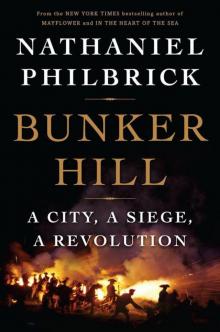 Bunker Hill: A City, a Siege, a Revolution
Bunker Hill: A City, a Siege, a Revolution Why Read Moby-Dick?
Why Read Moby-Dick?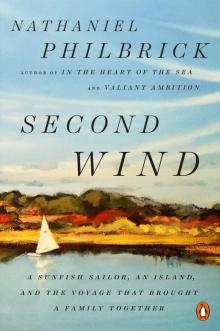 Second Wind: A Nantucket Sailor's Odyssey
Second Wind: A Nantucket Sailor's Odyssey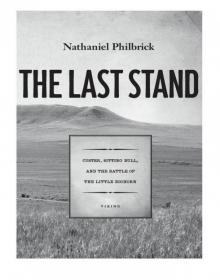 The Last Stand: Custer, Sitting Bull, and the Battle of the Little Bighorn
The Last Stand: Custer, Sitting Bull, and the Battle of the Little Bighorn In the Heart of the Sea: The Epic True Story That Inspired Moby-Dick
In the Heart of the Sea: The Epic True Story That Inspired Moby-Dick Away Off Shore: Nantucket Island and Its People, 1602-1890
Away Off Shore: Nantucket Island and Its People, 1602-1890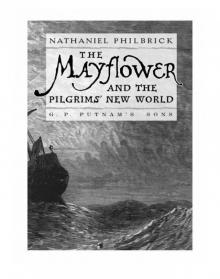 The Mayflower and the Pilgrims' New World
The Mayflower and the Pilgrims' New World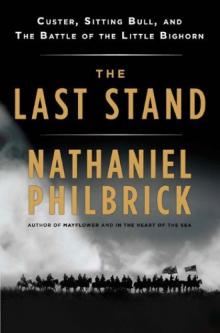 The Last Stand: Custer, Sitting Bull and the Battle of the Little Big Horn
The Last Stand: Custer, Sitting Bull and the Battle of the Little Big Horn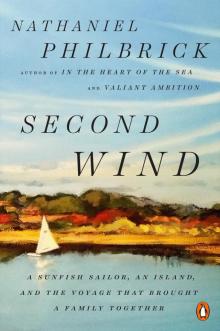 Second Wind
Second Wind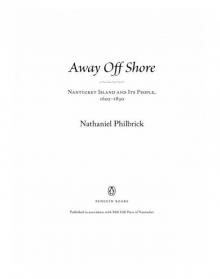 Away Off Shore
Away Off Shore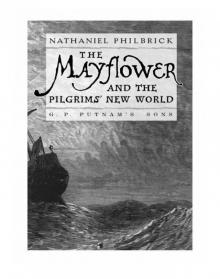 The Mayflower and the Pilgrims' New World*
The Mayflower and the Pilgrims' New World* Sea of Glory
Sea of Glory In the Heart of the Sea
In the Heart of the Sea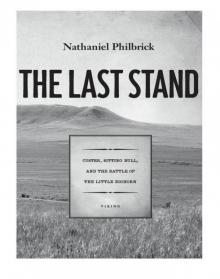 The Last Stand
The Last Stand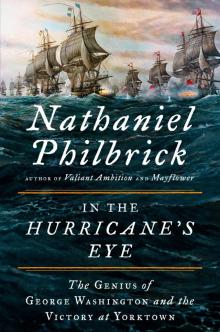 In the Hurricane's Eye
In the Hurricane's Eye